#banded sphinx moth
Text



A little friend on my backdoor this morning and it’s still there :3 sleepin’ covering their big eyes
8 notes
·
View notes
Photo



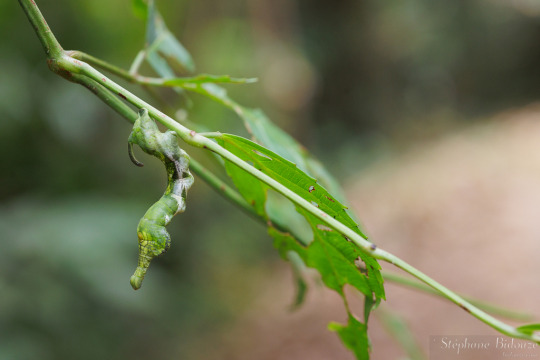



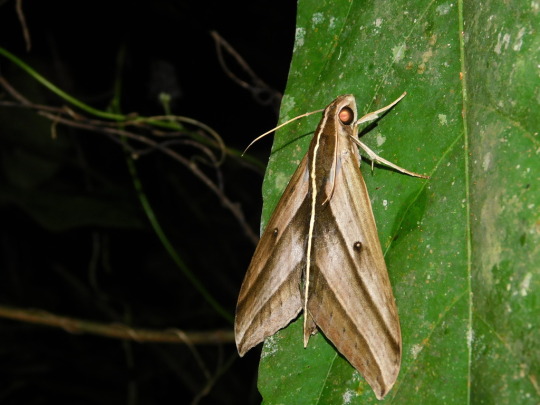

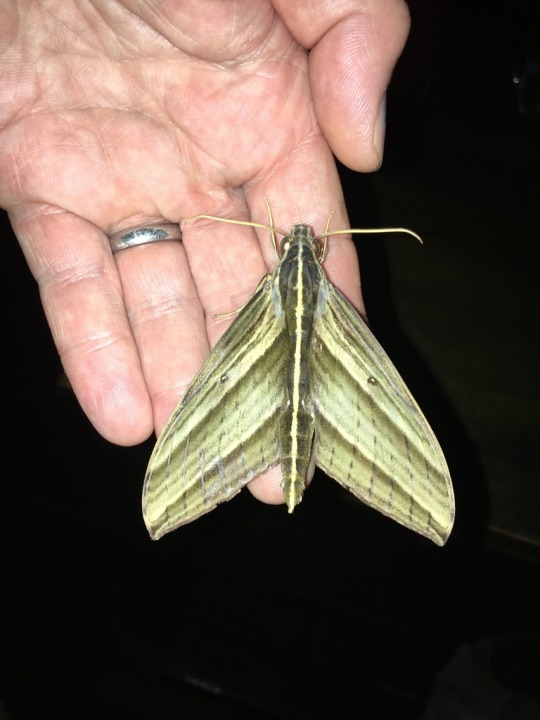
Large banded hawkmoth, Elibia dolichus, Sphingidae
Found in Southeast Asia
Photos 1-4 by smithore, 5 by gawenbl, 6 by hanchongchong, 7-8 by ganjarcahyadi, 9 by naomikim, and 10 by davehb
#animals#curators on tumblr#insects#bugs#moth#sphinx moth#large banded hawkmoth#caterpillar#larva#one nice bug
665 notes
·
View notes
Text

Encountered this banded sphinx moth this morning. She was on my neighbor’s door-jam, so I moved her to keep her from potentially being crushed when the door opened.
She was absolutely gorgeous, and remarkably strong. She was gripping firmly onto my hand when I removed her from the door she was on, but I got her off in the end. A beauty!
4 notes
·
View notes
Text
I’ve been doing a series called marvelous moths over on tick tock and you can REALLY see my improvement throughout it all.

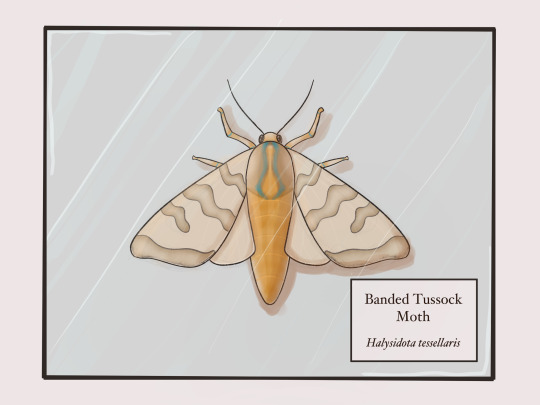


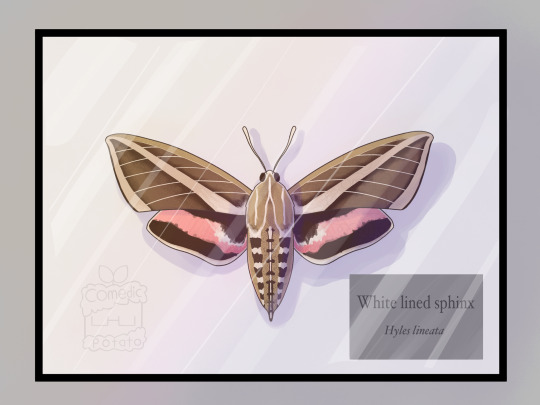
#art#my art#bugs#bugs my beloved#moths#moth#death head hawk moth#banded tussock moth#major sallow moth#eight spotted forester moth#white lined sphinx moth#entomology
6 notes
·
View notes
Text


this thing materialized in my bathroom sink
1 note
·
View note
Text
time lapse of a banded sphinx moth caterpillar (Eumorpha fasciatus) devouring a water primrose leaf
(Florida, 9/18/22)
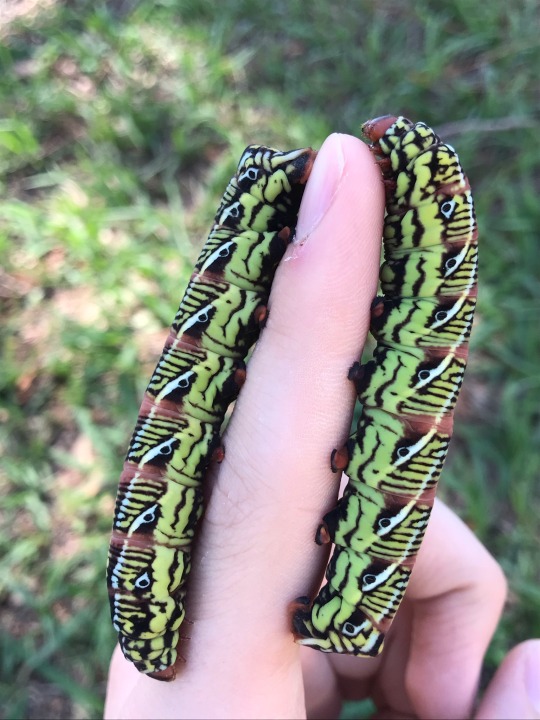

E. fasciatus caterpillars are heavily polymorphic and come in several different color morphs- those stripy rainbow ones are from the same population as the green one.
another neat thing about these guys is that most caterpillars drown easily, but since water primrose (Ludwigia) usually grows in standing water, E. fasciatus caterpillars have a propensity for swimming and are often seen wriggling their way through lakes when they need to come ashore to pupate.
#moths#sphingidae#lepidoptera#sphinx moth#eumorpha fasciatus#bugblr#bugs#insects#entomology#caterpillars
20K notes
·
View notes
Text
BUG OF THE DAY
BotD 14 - 04/04/24
These are the many different caterpillar color morphs of the Banded Sphinx moth!
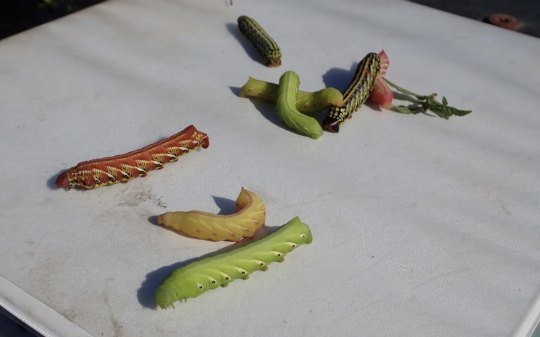
Today's BotD is specifically for these gorgeous caterpillars, but the adult moth of this species is also absolutely beautiful! (See below)
It's not uncommon for caterpillars to have some standard variation in their colors- in fact, color morphs are quite common! Usually, these color morphs benefit the caterpillars because it makes sure that no matter what environment they're in, some caterpillars will have a camouflage advantage. My favorite example of this is in the species Papilio polyxenes, or the Eastern Black Swallowtail. Not only do the caterpillars of this species show up either fronting green and white, or fronting black, but the chrysalids of this species can also show up either leafy green, or tree bark brown. This, however, is a very unusual amount of color morphing! Not only are there many different variations of these caterpillars, but they are all drastically different in color! Which flavor is your favorite? Mine is strawberry-banana!

Thea why are all of these recent posts about moths? Because I'm being self-indulgent !! Gosh !!! Go treat yourselves
#BotD#bug of the day#entomology#bugs#bug#bugblr#bugposting#insect#insects#moth#moths#lepidoptera#lepidopterology#caterpillar
77 notes
·
View notes
Text
Moth of the Week
White-Lined Sphinx
Hyles lineata

The white-lined sphinx is a part of the family Sphingidae. They are sometimes known as the hummingbird moth because of their size and how they hover over flowers for nectar. The were first described in 1775 by Johan Christian Fabricius as Sphinx lineata.
Description The forewings are dark brown with tan stripe cutting across mirrors on both sides. The veins of the forewings are lined in white. The top edge of the forewing or the “costal margin” is outlined in a light brown and the forewing’s side edge or the “outer margin” is lined in gray. The hindwings are black with a pink stripe called the “median band.” The furry body is also dark and light brown with black, pink, and white stripes and spots.
Wingspan Range: ≈5.1 - 7.6 cm (2 -3 in)
Diet and Habitat Caterpillars of this species eat a variety of plants such as: Willow weed (Epilobium), Four o'clock (Mirabilis), Apple (Malus), Evening primrose (Oenothera), Elm (Ulmus), Grape (Vitis), and more. Caterpillars can form large groups when finding food and damage many gardens and crops.
Adult moths drink the nectar from various flowers such as: Columbines, Larkspurs, Four o'clock (Mirabilis), Petunia, Honeysuckle, Moonvine, and more. The type of flower an adult feeds from depends on the visibility during certain times of the day. At night they will feed from white flowers because they are easier to see in the dark. Durning the day, they will feed on brighter flowers.
This moth has a large range spanning from Southern Canada down to Central America, going through Mexico and most of the United States. They are found occasionally in the West Indies and on even rarer occasions in Eurasia and Africa. They live in habitats such as deserts, gardens, suburbs, and the Mountains of Colorado. However their population varies in many places.
Mating This moth has two generations per year with more in warmer climates. Eggs are laid in the spring on the host plants. A female can lay hundreds of eggs, which overwinter as larvae and emerge in February to November. This is also when they begin eating.
Predators This moth prefers to fly at night but can be seen during the day. It is preyed on by common enemies of moths: birds and bats.
Fun Fact Caterpillars were, and still are in some places, eaten by Native Americans. They were skewered, roasted, and dried to store/ground. When compared to hamburger meat, the larvae have almost as much fat but 1/3 less saturated fat and more energy in calories, protein, carbohydrate, riboflavin, and niacin.
(Source: Wikipedia, Moth Identification)
#libraryofmoths#animals#bugs#facts#insects#moth#mothoftheweek#lepidoptera#Hyles lineata#white-lined sphinx#Sphingidae
105 notes
·
View notes
Text
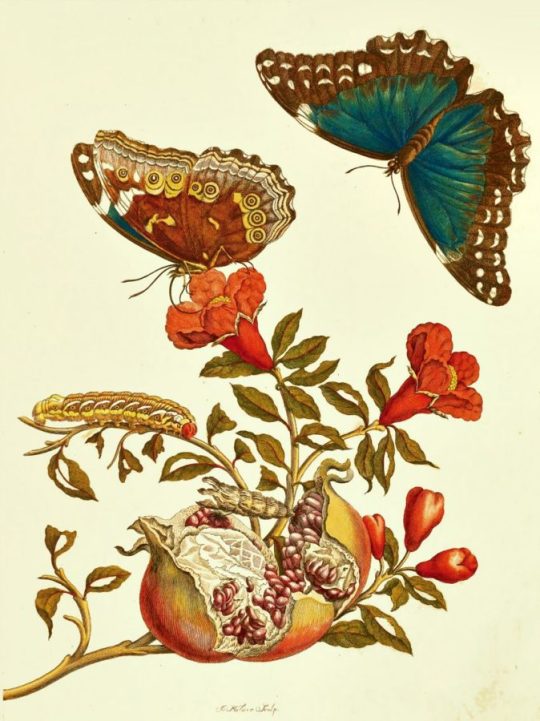
Maria Sibylla Merian (German, 1647-1717) • Pomegranate with Blue Morpho Butterflies and Banded Sphinx Moth Caterpillar • Illuminated Copper engraving from Metamorphosis insectorum Surinamensium, Plate IX by Maria Sibylla Merian • 1705
German entomologist, naturalist and scientific illustrator. She was one of the earliest European naturalists to document observations about insects directly. – Wikipedia
#art#painting#still life#fine art#art history#scientific drawing#maria sibylla merian#woman scientist#golden age entomologist#17th century naturalist#woman artist#german artist#drawing#naturalist#art of the still life blog#copper engraving#colored engraving#engraving#entomologic illustration
29 notes
·
View notes
Text
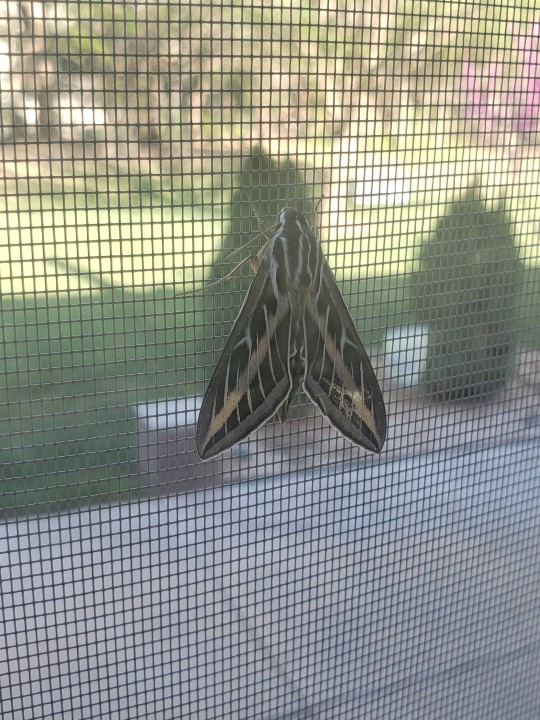
Cool bug I found! I believe it's a banded sphinx moth
78 notes
·
View notes
Text
🐝Send in a number + Character and I'll draw them in an outfit or as a creature based on that insect🦋
Allotopus Beetle
Apollo Butterfly
Assassin Bug
Atlas Moth
Bald-Faced Hornet
Banded Darter
Banded Demoiselle
Beautiful Demoiselle
Bhutan Glory Swallowtail
Black Swallowtail Butterfly
Bullet Ant
Bumblebee
Butterfly Dragonfly
Cabbage Butterfly
Cattlehearts Swallowtail
Common Batwing
Common Bluebottle Butterfly
Common Brimstone
Common Rose Swallowtail
Conehead Mantis
Cream-Spot Tiger Moth
Creobroter
Cuckoo Wasp
Death's-Head Hawkmoth
Devil's Flower Mantis
Differential Grasshopper
Drain Fly
Eastern Tiger Swallowtail
Eighteen-Spotted Ladybird
Elephant Hawkmoth
Elephant Mosquito
Emerald Bee
Emperor Dragonfly
European Hornet
European Mantis
Eyed Ladybug
Fire Ant
Five-Spotted Hawkmoth
Fork-Horned Stag Beetle
Fourteen-Spotted Ladybird
Ghost Mantis
Giant Leopard Moth
Giant Long-Legged Katydid
Giant Malaysian Leaf Insect
Glasswing Butterfly
Goliath Beetle
Golden-Ringed Dragonfly
Great Black Wasp
Green Grasshopper
Green June Beetle
Green Snaketail
Green Stag Beetle
Halyzia Sedecimguttata (aka orange ladybird)
Hercules Beetle
Honey Bee
Housefly
Hummingbird Clearwing
Hummingbird Hawkmoth
Impatiens Hawkmoth
Jerusalem Cricket
Jewel Beetle
Lime Hawkmoth
Long-Legged Fly
Luna Moth
Monarch Butterfly
Mosaic Darner
Mud Dauber
Oleander Hawkmoth
Orchid Mantis
Painted Lady Butterfly
Paper Wasp
Peacock Butterfly
Pharaoh Ant
Picasso Bug
Pipevine Swallowtail
Poplar Hawkmoth
Queen Alexandra's Birdwing
Question Mark Butterfly
Red Admiral
Rosy Maple Moth
Ruddy Darter
Scorpion Fly
Silverfish
Small Tortoiseshell
Snakefly
Southern Hawker
Southern Flannel Moth
Spicebush Swallowtail
Spiny Leaf Insect
Sunset Moth
Tailed Jay Butterfly
Tarantula Hawk
Thorn Bug
Tiger Mosquito
Twentytwo-Spot Ladybird
Ulysses Butterfly
White-Lined Sphinx
White Witch Moth
Yellow Jacket
Zebra Swallowtail
#drawing prompt#art prompt#oc prompt#creature prompt#monster prompt#clothing prompt#bug#art challenge#insect
11 notes
·
View notes
Photo

@cryptickludovick submitted: Not sure what this guy is, but he sure does bite, and i couldn’t find him in my bug ID book. He was found in the northern quebec region, in Canada, in august. Was wondering if you knew what he might be?
It’s a yellow-banded day sphinx moth caterpillar! Caterpillars can indeed give you a little nibble either defensively or because they think you might be food. Here’s an adult:


An impressive carpenter or bumble bee mimic! Photos by j_arndt
396 notes
·
View notes
Text
Back on my hyperfixation shenanigans so I have not slept and here's a list of what I consider to be the prettiest beetles, butterflies and moths, damselflies, and grasshoppers and crickets that inhabit Colorado and Kentucky according to insectidentification.org :
COLORADO
Emerald ash borer (Agrilus planipennis)
Fifteen-spotted lady beetle (Anatis labiculata)
Golden tortoise beetle (Charidotella sexpunctata)
Knapweed root weevil (Cyphocleonus achates)
Longhorn beetle (Semanotus amethystinus)
Dogbane Leaf Beetle (Chrysochus auratus)
European Ground Beetle (Carabus nemoralis)
Golden Net-wing Beetle (Dictyoptera aurora)?
Margined Blister Beetle (Epicauta funebris)
May Beetle - P. lanceolata (Phyllophaga lanceolata)
Mottled Tortoise Beetle (Deloyala guttata)
Pleasing Fungus Beetle (Gibbifer californicus)
Poplar Borer Beetle (Saperda calcarata)
Shining Leaf Chafer - Anomala spp. (Anomala spp.)
Signate Lady Beetle (Hyperaspis signata)
American Lappet Moth (Phyllodesma americana)
Cinnabar Moth (Tyria jacobaeae)
Common Checkered-Skipper (Pyrgus communis)
Glover's Silkmoth (Hyalophora columbia gloveri)
Great Ash Sphinx Moth (Sphinx chersis)
Autumn Meadowhawk (Sympetrum vicinum)
Black Saddlebags Skimmer (Tramea lacerata)
Bird Grasshopper (Schistocerca spp.)
Obscure Bird Grasshopper (Schistocerca obscura)
Sooty Longwing Katydid (Capnobotes fulginosus)
KENTUCKY
Andrew's Snail-eating Beetle (Scaphinotus andrewsii)
Black Firefly (Lucidota atra)
Calligrapha Beetle (Calligrapha spp)
Eastern Hercules Beetle (Dynastes tityus)
Emerald Euphoria Beetle (Euphoria fulgida)
Glowworm (Phengodes spp.)
Goldsmith Beetle (Cotalpa lanigera)
Metallic Wood-boring Beetle: Chalcophora (Chalcophora fortis)
Notched-mouth Ground Beetle (Dicaelus purpuratus)
One-spotted Tiger Beetle (Apterodela unipuncata)
Rainbow Darkling Beetle (Tarpela micans)
Rainbow Scarab Beetle (Phanaeus vindex)
Six-spotted Tiger Beetle (Cicindela sexguttata)
Southern Sculptured Pine Borer Beetle (Chalcophora georgiana)
Stag Beetle (Lucanus capreolus)
Twice-stabbed Lady Beetle (Chilocorus stigma)
Vietinghoff's Ground Beetle (Carabus vietinghoffii)
Abbott's Sphinx Moth (Sphecodina abbottii)
American Ermine Moth (Yponomeuta multipunctella)
Arched Hooktip (Drepana arcuata)
American Bird's-Wing Moth (Dypterygia rozmani)
Arcigera Flower Moth (Schinia arcigera)
Attentive Crocus Moth (Xanthotype attenuaria)
Basswood Leafroller (Pantographa limata)
Beautiful Wood-Nymph (Eudryas grata)
Black-waved Flannel Moth (Megalopyge crispata)
Blackberry Looper (Chlorochlamys chloroleucaria
Blinded Sphinx Moth (Paonias excaecata)
Bluish Spring Moth (Lomographa semiclarata
Buck Moth (Hemileuca maia)
Carmine Snout Moth (Peoria approximella)
Carrot Seed Moth (Sitochroa palealis)
Cecropia Silk Moth (Hyalophora cecropia)
Changeable Grass-Veneer (Fissicrambus mutabilis)
Colorful Zale (Zale minerea)
Common Lytrosis Moth (Lytrosis unitaria)
Confused Eusarca (Eusarca confusaria)
Cross-lined Wave (Timandra amaturaria)
Curve-toothed Geometer (Eutrapela clemataria)
Dark-banded Geometer (Ecliptopera atricolorata)
Deep Yellow Euchlaena (Euchlaena amoenaria)
Diaphania costata (Diaphania costata
Dimorphic Macalla (Epipaschia superatalis)
Dot-lined White (Artace cribrarius)
Dotted Gray (Glena cribrataria)
Drab Prominent (Misogada unicolor)
Eight-spotted Forester Moth (Alypia octomaculata)
Elder Shoot Borer (Achatodes zeae)
Explicit Arches (Lacinipolia explicata)
Eyed Paectes Moth (Paectes oculatrix)
Falcate Orangetip (Anthocharis midea) (female)
Fall Webworm (Hyphantria cunea)
False Crocus Geometer (Xanthotype urticaria
Fervid Plagodis (Plagodis fervidaria)
Fig Sphinx (Pachylia ficus)
Friendly Probole Moth (Probole amicaria)
Giant Leopard Moth (Hypercompe scribonia)
Goldcap Moss-eater Moth (Epimartyria auricrinella)
Gray-edged Hypena (Hypena madefactalis)
Green Arches (Anaplectoides prasina)
Hag Moth (Phobetron pithecium
Hibiscus Leaf Caterpillar Moth (Rusicada privata)
Imperial Moth (Eacles imperialis)
Lesser Maple Spanworm Moth (Speranza pustularia
Luna Moth (Actias luna)
Melissa Blue Butterfly (Plebejus melissa spp.)
Modest Sphinx Moth (Pachysphinx modesta)
Morbid Owlet Moth (Chytolita morbidalis)
Orange-patched Smoky Moth (Pyromorpha dimidiata)
Pale Beauty (Campaea perlata)
Pale Lichen Moth (Crambidia pallida)
Pale Metarranthis (Metarranthis indeclinata)
Pandorus Sphinx Moth (Eumorpha pandorus)
Parthenice Tiger Moth (Apantesis parthenice)
Pearly Wood-Nymph Moth (Eudryas unio)
Pero Moth (Pero spp.)
Pink-patched Looper (Eosphoropteryx thyatyroides)
Pipevine Swallowtail (Battus philenor)
Pistachio Emerald Moth (Hethemia pistasciaria)
Plebeian Sphinx Moth (Paratrea plebeja) (Caterpillar)
Primrose Moth (Schinia florida)
Promiscuous Angle Moth (Macaria promiscuata)
Raspberry Pyrausta (Pyrausta signatalis)
Rustic Sphinx Moth (Manduca rustica)
Saddleback Caterpillar Moth (Acharia stimulea)
Saddled Yellowhorn (Colocasia flavicornis)
Salt-and-pepper Looper Moth (Syngrapha rectangula)
Satin Moth (Leucoma salicis)
Scarlet-winged Lichen Moth (Hypoprepia miniata)
Schlaeger's Fruitworm Moth (Antaeotricha schlaegeri)
Showy Emerald Moth (Dichorda iridaria)
Small Bird Dropping Moth (Ponometia erastrioides)
Snowy Urola (Urola nivalis)
Sorghum Webworm Moth (Nola cereella)
Southern Flannel Moth (Megalopyge opercularis)
Southern Longhorn Moth (Adela caeruleella)
Southern Pine Sphinx (Lapara coniferarum)
Southern Tussock Moth (Dasychira meridionalis)
The Badwing (Dyspteris abortivaria)
Unspotted Looper Moth (Allagrapha aerea)
Venerable Dart Moth (Agrotis venerabilis
Vine Sphinx Moth (Eumorpha vitis)
Walnut Sphinx Moth (Amorpha juglandis)
Wavy-lined Emerald Moth (Synchlora aerata)
Western Grapeleaf Skeletonizer Moth (Harrisina metallica)
White Flannel Moth (Norape ovina)
White Slant-line Moth (Tetracis cachexiata)
White-fringed Emerald Moth (Nemoria mimosaria)
Yucca Moth (Tegeticula, Greya, and Prodoxus spp.)
Carolina Locust (Dissosteira carolina)
Eastern Shieldback Katydid (Atlanticus spp.)
Slender Meadow Katydid (Conocephalus fasciatus)
True Katydid (Pterophylla camellifolia)
Ebony Jewelwing (Calopteryx maculata)
Midland Clubtail (Gomphurus fraternus)
Red Saddlebags (Tramea onusta)
Seepage Dancer (Argia bipunctulata)
5 notes
·
View notes
Photo
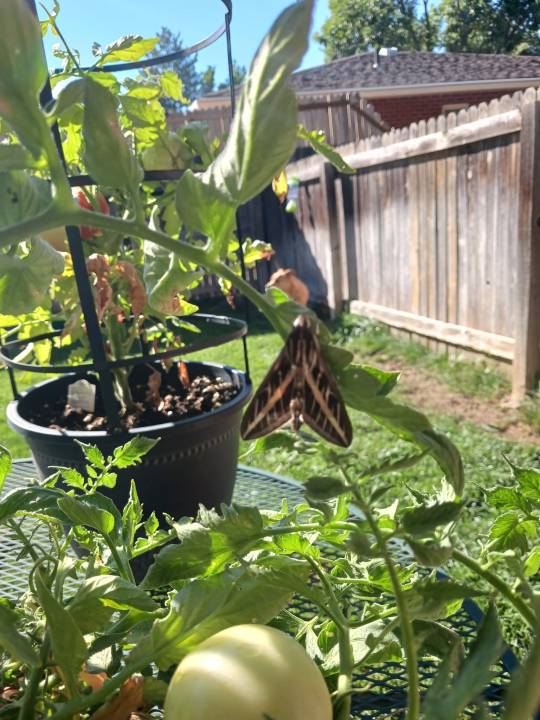


thinking about the yuge banded sphinx moth that visited me in my garden this morning..
7 notes
·
View notes
Photo

New stickers are up on redbubble. Might order some for the etsy shop down the road
https://www.redbubble.com/i/sticker/Banded-Sphinx-moth-by-T-Harley/136684723.EJUG5
https://www.redbubble.com/i/sticker/clymene-haploa-by-T-Harley/136687936.EJUG5
3 notes
·
View notes
Text
Eumorpha fasciatus.
The Banded Sphinx Moth has always been good company to me.
6 notes
·
View notes